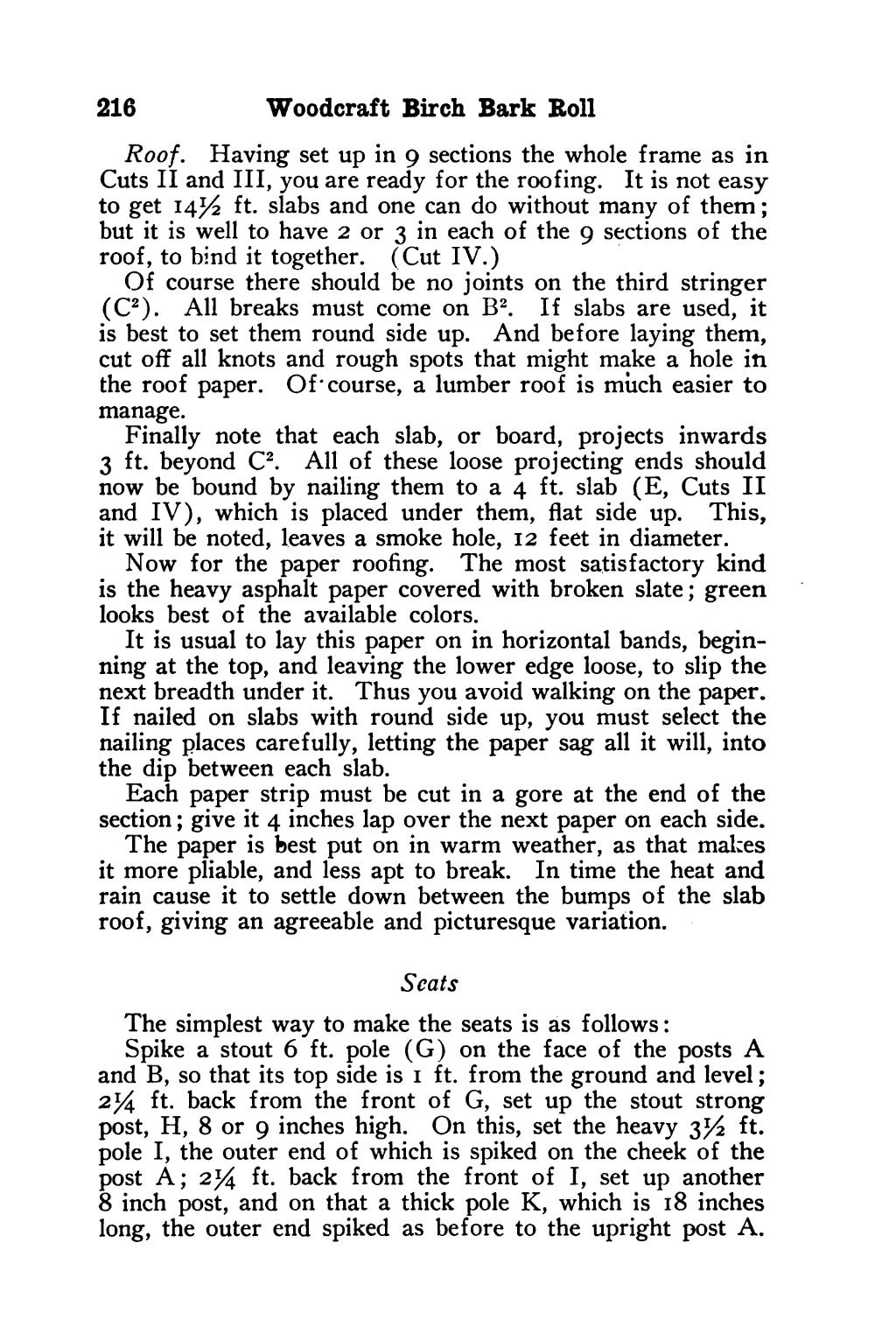216 Woodcraft Birch Bark Roll Roof. Having set up in 9 sections the whole frame as in Cuts II and III, you are ready for the roofing. It is not easy to get 14% ft. slabs and one can do without many of them; but it is well to have 2 or 3 in each of the 9 sections of the roof, to bind it together. (Cut IV.) Of course there should be no joints on the third stringer (C?). All breaks must come on B*. If slabs are used, it is best to set them round side up. And before laying them, cut off all knots and rough spots that might make a hole in the roof paper. Of-course, a lumber roof is much easier to manage. Finally note that each slab, or board, projects inwards 3 ft. beyond C*. All of these loose projecting ends should now be bound by nailing them to a 4 ft. slab (E, Cuts II and IV), which is placed under them, flat side up. This, it will be noted, leaves a smoke hole, 12 feet in diameter. Now for the paper roofing. The most satisfactory kind is the heavy asphalt paper covered with broken slate; green looks best of the available colors. It is usual to lay this paper on in horizontal bands, begin- ning at the top, and leaving the lower edge loose, to slip the next breadth under it. Thus you avoid walking on the paper. If nailed on slabs with round side up, you must select the nailing places carefully, letting the paper sag all it will, into the dip between each slab. Each paper strip must be cut in a gore at the end of the section ; give it 4 inches lap over the next paper on each side. The paper is best put on in warm weather, as that makes it more pliable, and less apt to break. In time the heat and rain cause it to settle down between the bumps of the slab roof, giving an agreeable and picturesque variation. Seats The simplest way to make the seats is as follows: Spike a stout 6 ft. pole (G) on the face of the posts A and B, so that its top side is 1 ft. from the ground and level ; 2% ft. back from the front of G, set up the stout strong post, H, 8 or g inches high. On this, set the heavy 3% ft. pole I, the outer end of which is spiked on the cheek of the post A; 2% ft. back from the front of I, set up another 8 inch post, and on that a thick pole K, which is 18 inches long, the outer end spiked as before to the upright post A.
Stránka:roll 1931.djvu/232
Z thewoodcraft.org
Tato stránka nebyla zkontrolována
